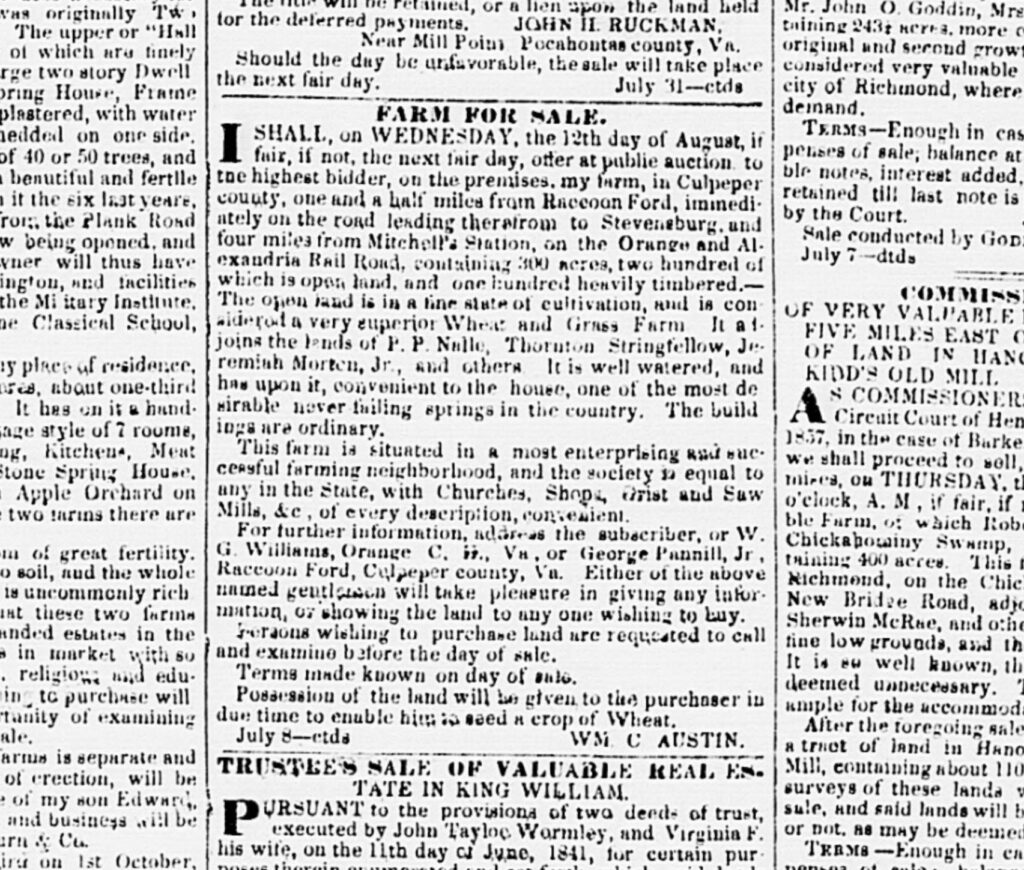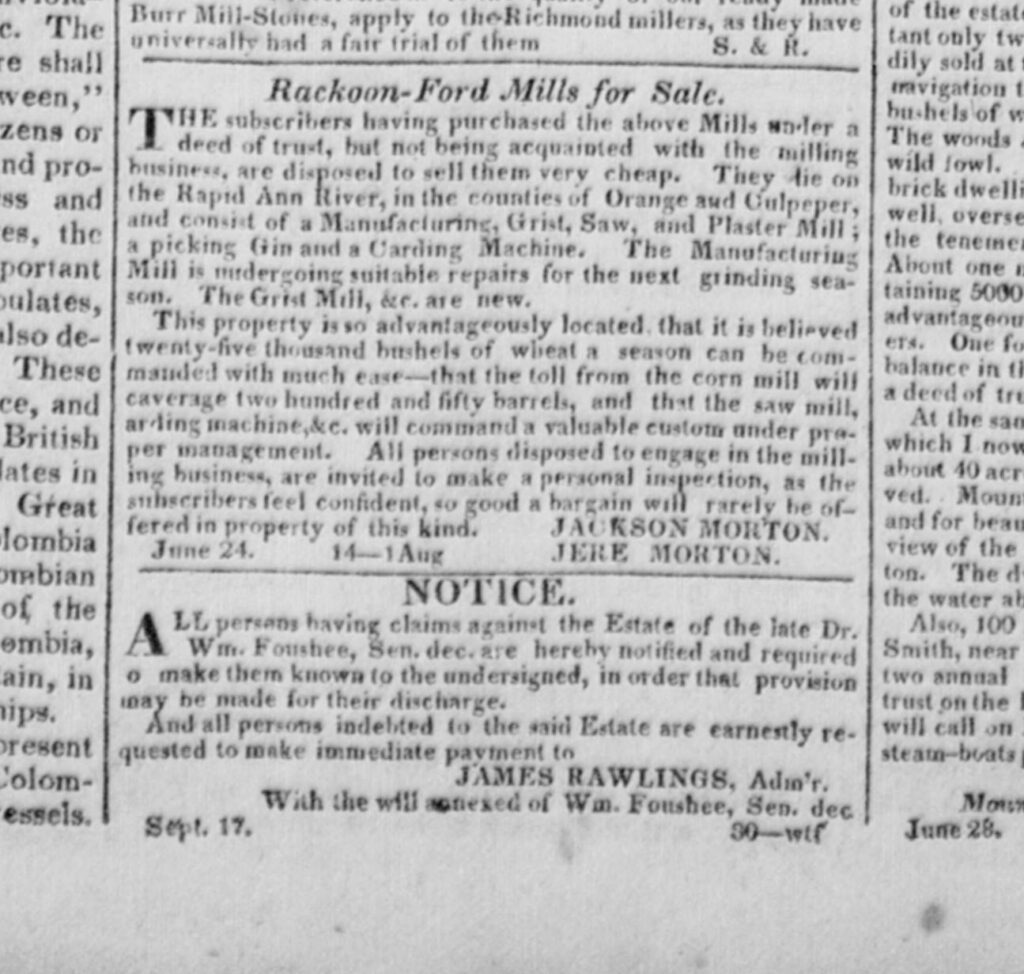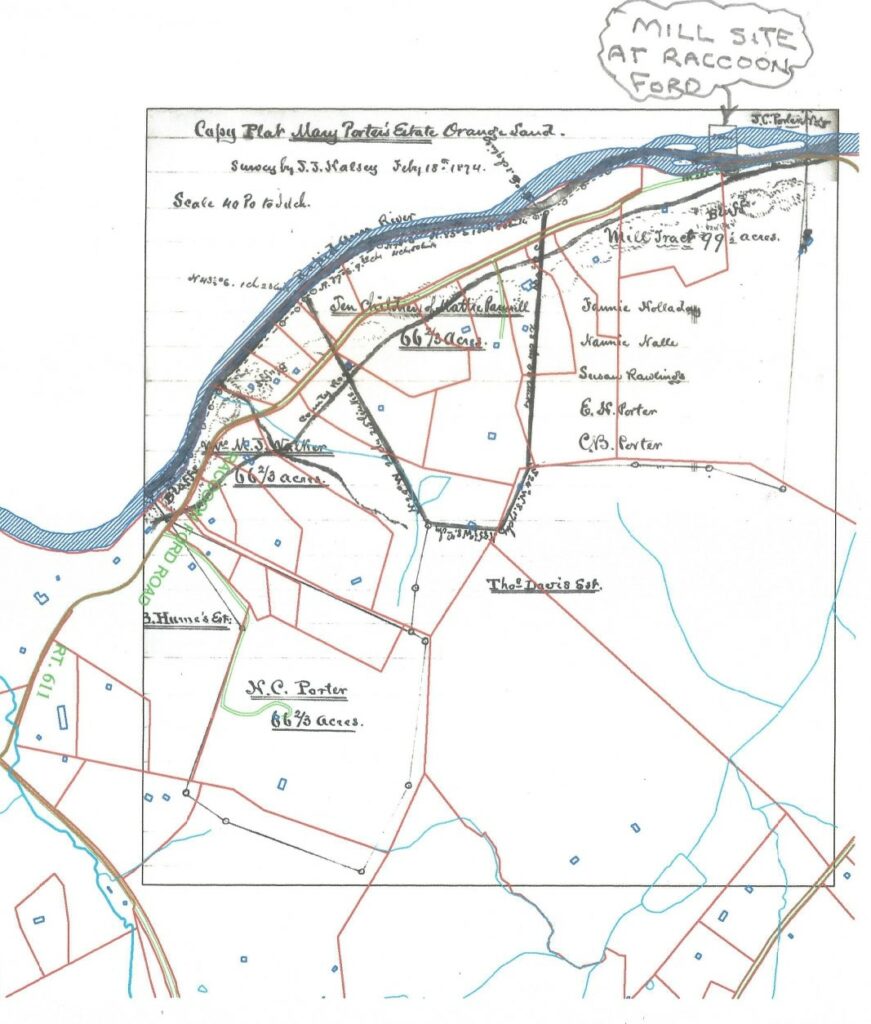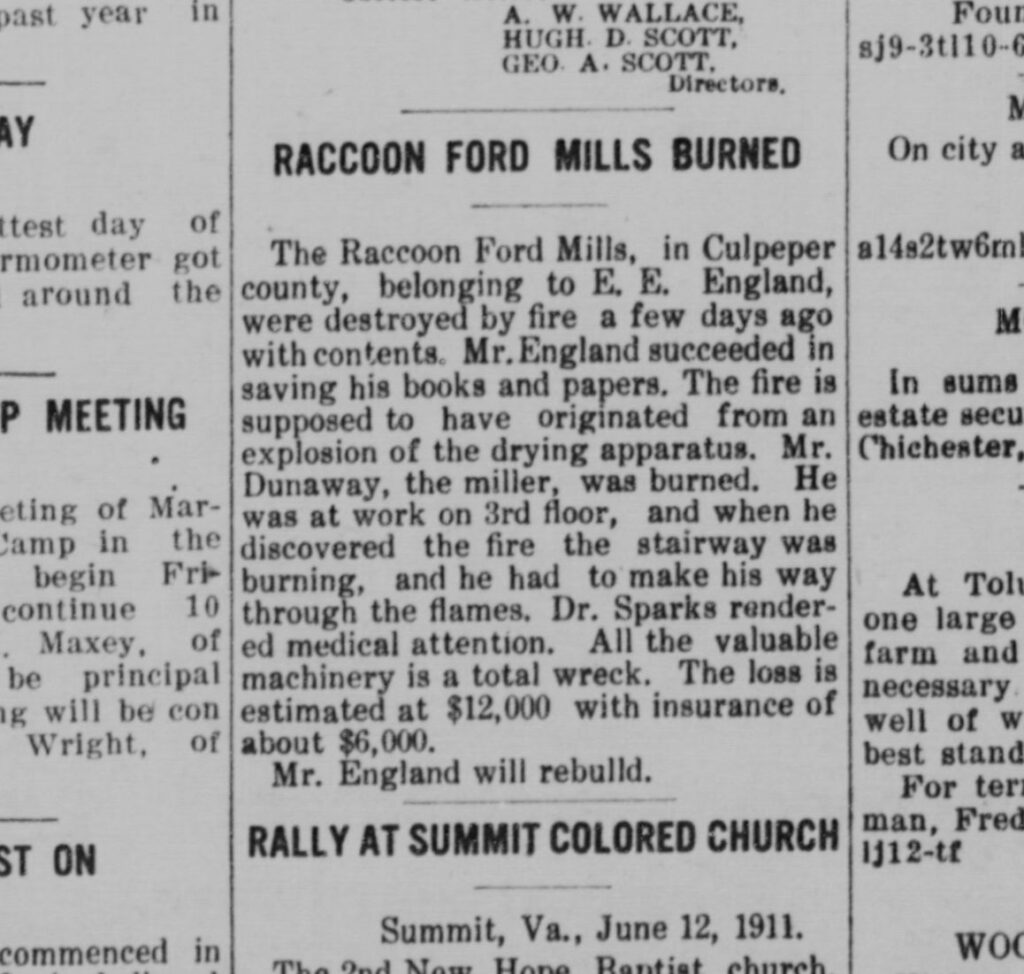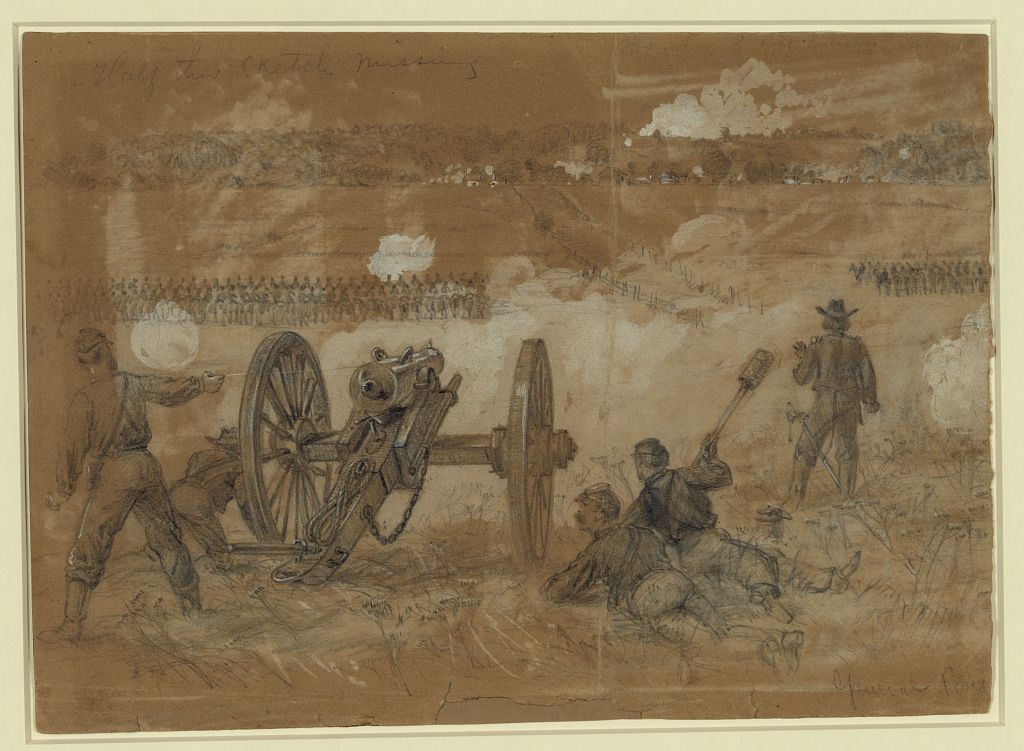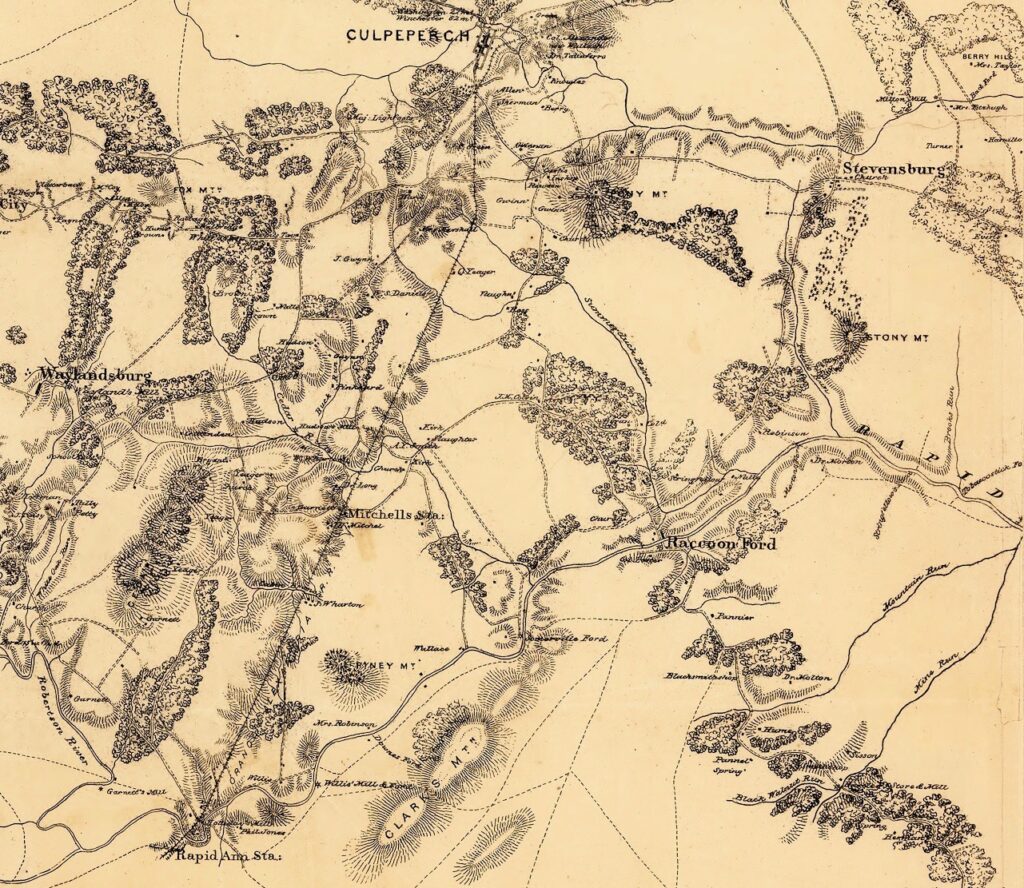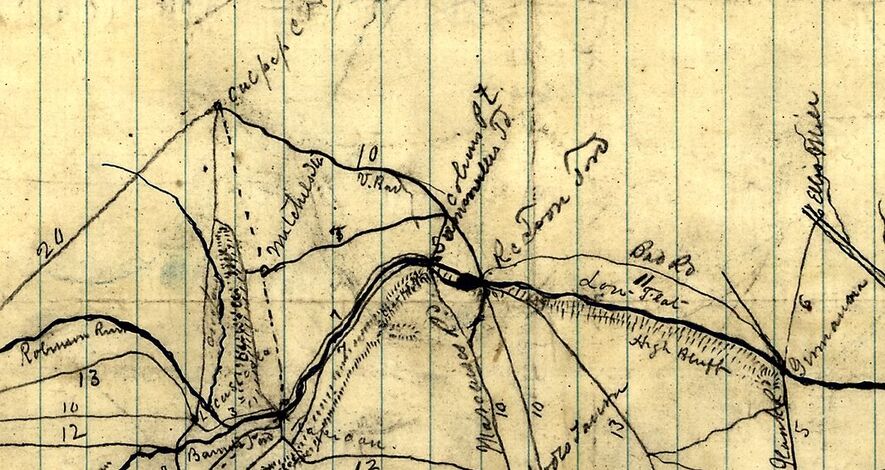The Library of Congress/National Endowment for the Humanities website Chronicling America is an invaluable resource for gathering articles and ads from America’s newspapers. A review of the site yielded the following mentions of happenings in pre-Civil War 19th century Raccoon Ford that document a thriving small village.
August 10, 1838, Richmond Enquirer: An Executor’s Notice of sale of land near the Rapidan River in Orange and Culpeper counties. The notice highlights “three very fine merchant mills upon the river,” one of which is identified as Raccoon Ford Mills. Source: Richmond enquirer. [volume] (Richmond, Va.), 10 Aug. 1838. Chronicling America: Historic American Newspapers. Lib. of Congress. <https://chroniclingamerica.loc.gov/lccn/sn84024735/1838-08-10/ed-1/seq-3/>
January 18, 1850, the Alexandria Gazette: Under the headline “Post Office Appointments” it is reported that Philip P. Nalle has resigned as postmaster, and Joseph J. Halsey has been named to succeed him. Source: Alexandria gazette. [volume] (Alexandria, D.C.), 19 Jan. 1850. Chronicling America: Historic American Newspapers. Lib. of Congress. <https://chroniclingamerica.loc.gov/lccn/sn85025007/1850-01-19/ed-1/seq-2/>
September 19, 1851, the Alexandria Gazette: The sale of Benjamin L. Hume’s 5 to 600 acre property near “the flourishing village of Raccoon Ford” is posted. Hume highlights that the property is in proximity to Culpeper Court House, Fredericksburg, Alexandria and the proposed Orange and Alexandria Railroad route. Also highlighted are the richness of the farmland, nearby commercial enterprises and churches. Plus, he is “anxious to sell and will give a bargain.”
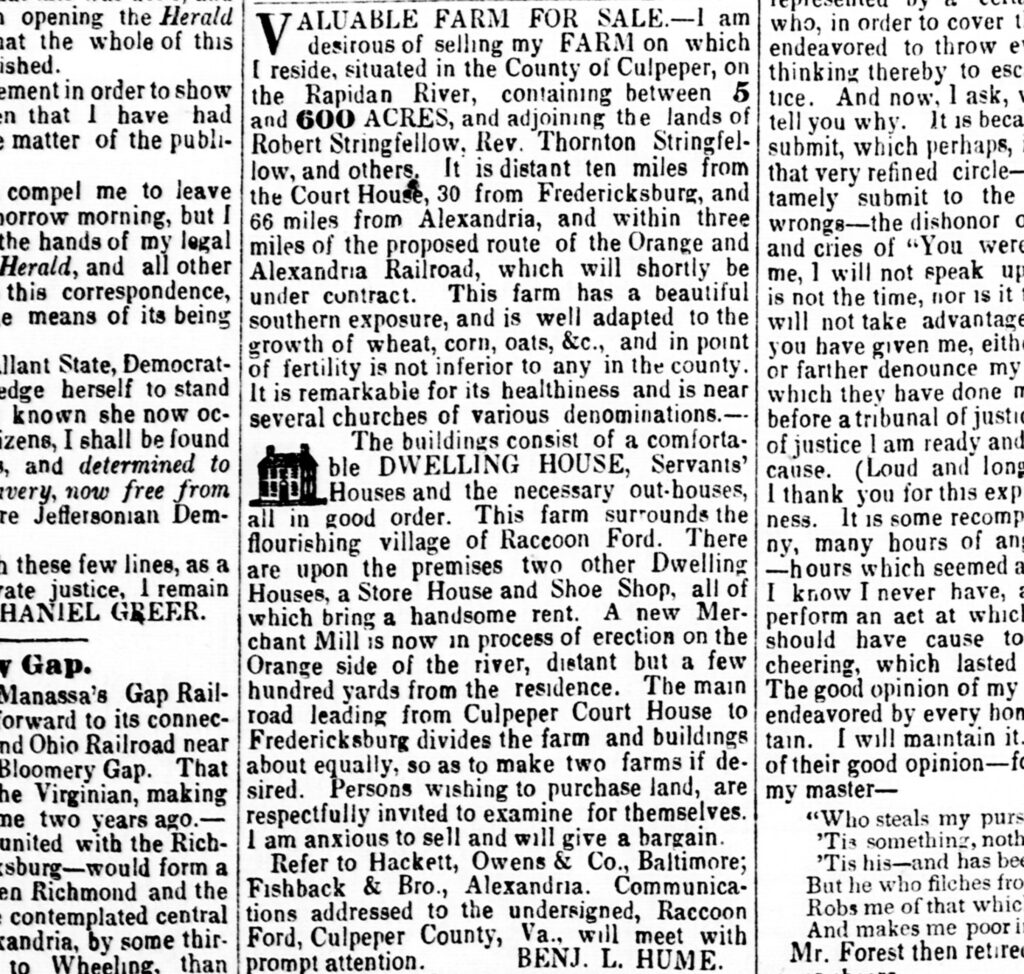
May 28, 1852: Reported in the Richmond Daily Dispatch, “Several cases of small pox have occurred at Raccoon Ford, Culpepper county. Mr. J.W. Crittenden has fallen a victim to the disease.” Source: The daily dispatch. [volume] (Richmond [Va.]), 28 May 1852. Chronicling America: Historic American Newspapers. Lib. of Congress. <https://chroniclingamerica.loc.gov/lccn/sn84024738/1852-05-28/ed-1/seq-2/>
January 7, 1853: The Alexandria Gazette reports that “A general interest has been awakened in the region of Raccoon Ford & c., in reference to the proposed Plank Road to Culpeper Court House, by way of that place.” Interestingly, this news was tucked below a notice that the Syracuse and Binghamton Railroad would be adding berths to their night cars, and above a mention of the funeral of War of 1812 veteran Commodore Charles W. Morgan at the Navy Yard in Washington. Source: Alexandria gazette. [volume] (Alexandria, D.C.), 07 Jan. 1853. Chronicling America: Historic American Newspapers. Lib. of Congress. <https://chroniclingamerica.loc.gov/lccn/sn85025007/1853-01-07/ed-1/seq-2/>
October 19, 1853, the Alexandria Gazette: As a follow up to the mention above regarding the Plank Road, this October article alerts that the Plank Road from Fredericksburg to Liberty Mills is complete and that the branch through Raccoon Ford to Culpeper Court House was begun in August and completed in September. “This branch strikes off the main stem about 26 miles from Fredericksburg – near Deadman’s (ed.: unknown) – making the distance from there to Culpeper Court House 15 and a quarter miles.” The writer observes that “horses and mules … seem to have taken a fancy to the plank and instead of shying off, leave the road with evident reluctance.” Source: Alexandria gazette. [volume] (Alexandria, D.C.), 19 Oct. 1853. Chronicling America: Historic American Newspapers. Lib. of Congress. <https://chroniclingamerica.loc.gov/lccn/sn85025007/1853-10-19/ed-1/seq-2/>
January 22, 1856, Alexandria Gazette: A report that “Mr. Eggborn of Culpeper has offered a resolution in the House of Delegates for a plank or graded road from Brandy Station via Stevensburg to Raccoon Ford, in Culpeper.” Source: Alexandria gazette. [volume] (Alexandria, D.C.), 22 Jan. 1856. Chronicling America: Historic American Newspapers. Lib. of Congress. <https://chroniclingamerica.loc.gov/lccn/sn85025007/1856-01-22/ed-1/seq-2/>
For development of another road from Raccoon Ford, the following act was passed by the House of Delegates on February 6, 1856:
- Be it enacted by the general assembly, that it shall be lawful to open books for receiving subscriptions to an amount not exceeding twelve thousand dollars, to be divided into shares of fifty dollars each for the purpose of contructing a graded turnpike road from the Raccoon Ford in the county of Culpeper to Mitchell’s station on the Orange and Alexandria railroad in the county aforesaid. The books shall be opened at the store of Mr. R. S. Stringfellow at the Raccoon ford, under the direction of John A. Porter, George Pannill, junior, James O. Harris and William Colvin, or any one of them; and at such other places and under the direction of such agents as a majority of the above named commissioners may appoint.
- When one-third of the above capital shall have been subscribed, the subcribers, their executors, administrators and assigns, shall be incorporated into a company, by the name and style of The Raccoon Ford Turnpike Company; subject to the provisions of chapters fifty-seven and sixty-one of the Code of Virginia: provided that the said company shall have the privilege of making the said road, or any part thereof with rock gravel, sand, clay or plank, as to them shall seem most expedient; that the said road shall occupy not less than twelve feet in width nor more than thirty feet; and that is grade shall in no case exceed three degrees to the mile; and further, that the rates of toll shall not exceed those by law authorized to be collected on the Fredericksburg and Valley plank road.
- This act shall be in force from its passage. (Source: Acts of the General Assembly of Virginia: passed in 1855-6 in the Eighteenth Year of the Commonwealth)
March 21, 1857, Alexandria Gazette: Fire, a hazard of the times, was all too frequently reported. According to the Gazette, “The dwelling of Dr. George Morton near Raccoon Ford in this County, was consumed by fire one day last week, together with a portion of his furniture. We learn that it was quite an old building, and that the Dr. proposed pulling it down this Spring in order to rebuild.” https://chroniclingamerica.loc.gov/lccn/sn85025007/1857-03-21/ed-1/seq-3/
August 4, 1857, The Richmond Enquirer. Property sale notices, particularly for attractive properties, would make it into the large regional newspapers. The area around Raccoon Ford had a number of farms, including this one in a “fine state of cultivation” and “considered a superior Wheat and Grass Farm.” Note the list of the neighbors, who presumably contributed to the “society equal to any in the state.”
